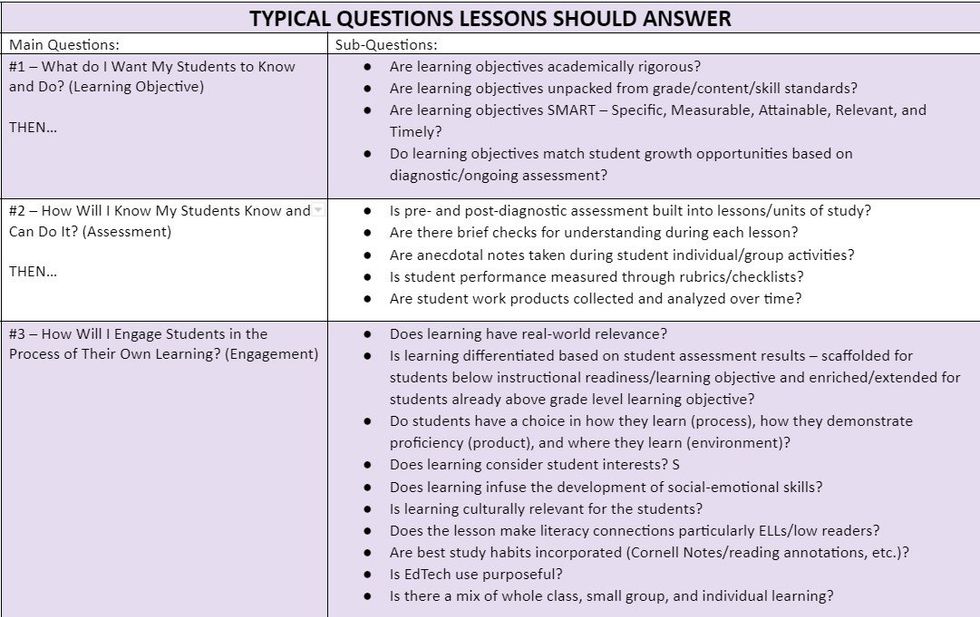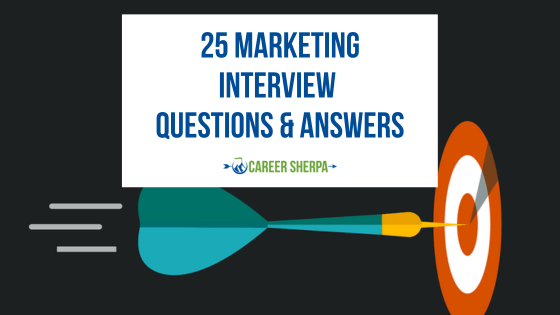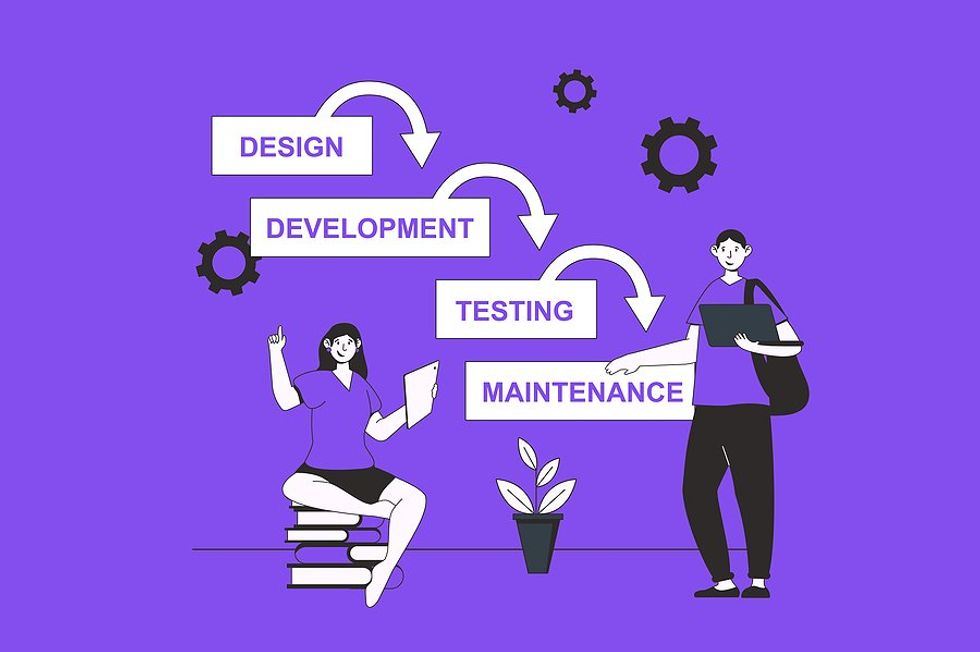
The other day, I was sitting around with other education consultants. And, as those who observe classrooms for a living are apt to do, we started discussing what teaching and learning elements illustrate both quality instruction and superior learning environments. What elements might define the âperfectâ classroom?
Even though most educators live at âproficientâ and only visit âwell-developedâ practices, for reasons both within and outside oneâs locus of control, I believe a conversation on how a utopian classroom might look, in theory, is also worth having here.
The Three Questions That All Instruction Must Address

âAll too often, educators get caught up thinking about the activities that students are going to do without first considering if these activities are aligned with learning goals. Stop. Think strategically. Review the basic, ground-level parameters for quality teaching and learning first.
At their core, every lesson must answer three basic questions in this order:
- What do I want my students to know and do?
- How will I know students know and can do the learning objective of the lesson?
- How can I vest students in the process of learning in ways/activities that are aligned with the learning objective?
Once we have a clear understanding that every lesson should answer the above questions, sequentially, we can then consider the elements for what might be the âperfect classroom.â Here are the 10 things that I would want to see in paradise:
1. Clear Classroom Expectations And Procedures

Sometimes, I will sit down in a classroom before students arrive back from specials, lunch, recess, their last class, etc. I do this because I want to see if there are clear policies and procedures in place; a well-organized classroom is one where we do not lose one second of teaching time. Is there an introductory activity (âDo Nowâ) that students must complete as they enter the room? Do students know where in the classroom to pick up their writing journals? Is there a clear format/agenda to how the lesson will proceedâintroduction, mini-lecture, student practice, and summary? At the end of class, is there a summary learning activity? A well-ordered classroom is usually a happier one with fewer student behavioral issues.
2. Academic Rigor

Every lesson should have a clear learning objective; however, we canât end the discussion on learning objectives there. Learning objectives must be cognitively complex; that is, they must extend our studentsâ thinking beyond rote memorization if students are to become critical consumers of information in society as well as problem solvers.
When crafting learning objectivesâwhich teachers should also post and discuss with studentsâI want teachers to consider the depth of knowledgeâmental demandâthat they will require of students: the questions they will ask students to answer, tasks they will ask students to complete, etc. For example, we can have high school students memorize tips on writing a business proposal or, better yet, to have cognitive complexity, we can have students write and present their own business proposals.
3. Varied And Ongoing Assessment

Assessment does not always have to be a formal paper and pencil test that comes at the end of each unit. In every lesson, every day, I want to see teachers checking on student understanding in both informal and formative ways.
Think about driving for a moment. While one may have driving directions to help them reach their destination, sometimes detours and circle-backs are necessary to ultimately get to where one wants to go. Just like in driving, sometimes student misconceptions will force us as teachers to go slower, model a procedure multiple times, or find another way to present a concept. A teacher can only know if they must pivot through ongoing assessmentâquestioning/cold calling, signaling, polling, etc.
4. Student Engagement

I once worked with a middle school teacher who had students produce a morning chat show (âGood Morning Athensâ) when they were learning about ancient Greece; the students came alive. While standardized paper and pencil tests arenât going away anytime soon, and students do need to be prepared for this type of assessment, assessing students authenticallyâproject-based learning, applying scientific/math problems to real-world situations, designing models, creating multimedia projects, and engaging students in role-plays/problem of practice consultanciesâcan help teachers better assess how well students can transfer knowledge to new situations. Such activities can also be designed in ways that are kinesthetic, visual, and auditory in nature, allowing our students the opportunity to practice learning from multiple angles.
If teachers do the above, we should not see students disrupting and/or avoiding tasks but rather students invested in their learning and on-task in their interactions with peers; even better if students are assessing their individual and collective growth and achievement.
5. Use Of Multimodal Resources

The textbook is not the curriculum. However, I often find myself reminding teachers of this fact. Itâs ok to augment textbooks and written curriculum with age-appropriate multimodal resources that may further engage students in learning. Enrich the type of student-facing materials you, as teacher, provide. Have non-print materials such as video clips (not full movies); bring in primary source materials like photographs; use infographics, graphs, charts, maps; integrate audio recordings, podcasts, artifacts; and utilize math manipulatives, etc.
6. Purposeful Use Of Classroom Space

Teachers need to be mindful of how much space their desk and personal effects are taking up within a classroom. I distinctly remember working with one teacher whose room was covered by Denver Broncos memorabilia. Yes, educators, show your personalities but in a confined way.
In so doing, teachers may find that they have the floor space to divide their classroom into learning âzonesâ for individual, small group, and whole group student learning. Classroom walls are also a precious gift if they are used to reinforce literacy (word walls), exhibit student work that demonstrates mastery of standards (portfolio assessment), post directions/steps to common math problems, and display anchor charts such as reading annotation codes as well as performance rubrics, etc. Configurable ergonomic furniture can also allow for maximum student mobility while smaller teacher desks with wheels can be positioned next to students.
7. Personalization Of Learning

Struggling students and, on the other end of the spectrum, bored students are both a recipe for disengagement from school. When I observe a classroom, I like to ask students what they are doing. When students show me their work, I can see if this work is differentiatedâmeaning are high-interest/low-level reading texts offered and scaffolds provided to help struggling students meet grade-appropriate learning objectives? Are multiple resources and/or is text being provided at a higher reading level to students who have already met the objective? While some teachers may say that personalization of learning takes too much effort, we need to invest the time if we want to ensure that all our students have an equitable opportunity to learn.
8. Literacy Connections

The reality is that we must be mindful that we are all literacy teachers. If students donât understand what they are reading, they will not understand the subject-specific content. In lower elementary school, I look to see both the teaching of phonics AND whole language explicitly. In upper elementary through high school, literacy should be weaved into content/subject-specific learning using learning tools such as Cornell Notes, annotations while reading, and other content-specific vocabulary development activities. This is critically important if we are serving struggling readers, students with special needs, and/or multi-lingual learners.
9. Social-Emotional Connections

We all know that, in the wake of the pandemic, students are struggling with their mental health. We also know that bullying that starts online often finds its way into our schools. In a post-pandemic classroom, we should see teachers developing multi-layered lessons and activities where students can develop the self-awareness that leads to strong self-identity, establish interpersonal skills that nurture positive social relationships, and demonstrate intentional decision-making skills.
The above can come in the form of activities that ask students to self- and peer-assess as well as through more extended student-informed portfolio assessment and student conferencing activities. Teachers and students also can shout out positive student behavior when they see it, particularly during lesson summary activities.
10. Purposeful Use Of EdTech

Letâs remain calm over the advent of AI. While AI comes with risks, it also provides teachers with, for example, the opportunity to develop differentiated lessons more efficiently and can help students research answers to questions they may pose across the depth of knowledge continuum. AI can even help us adjust the reading level of texts for students. The uses are almost endless.
Although AI has captured our attention as educators, EdTech is more than just AI. Many 21st-century schools, for instance, use Google Classrooms to organize learning digitally. Within moderation, EdTechâdigital gamification in particularâalso can increase student engagement through both cooperation and competition. Consider then the diverse needs of students when integrating EdTech. EdTech should be a value-add not just a mindless distraction. Make learning equitable, efficient, effective, and/or engaging through its useâthink â4Es.â
Choose What Works For Students

Schools and teachers have constraints; so, donât fret about doing everything all at once. Still, knowing the different elements of good practice can only further our mission to help all students grow and achieve; teachers should make a conscious effort to infuse their classrooms with as many of these elements at one time that make sense and all over time.
John Schembari is a school improvement coach. You can reach out to him on LinkedIn.









































